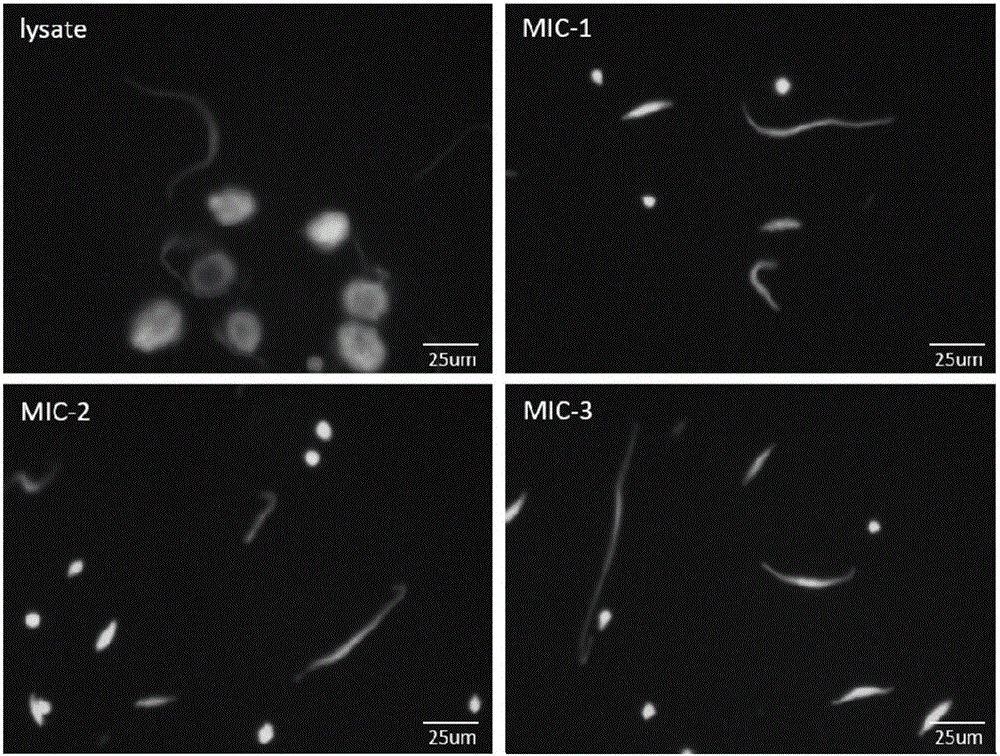Separation and purification method of crosslinked tetrahymena micronucleus
A technology of Tetrahymena and thermophilic Tetrahymena, applied to animal cells, etc., can solve the problems of unsuitable cells, difficult to carry out effectively, unsuitable for separation, etc.
- Summary
- Abstract
- Description
- Claims
- Application Information
AI Technical Summary
Problems solved by technology
Method used
Image
Examples
Embodiment Construction
[0024] The present invention is achieved by the following means.
[0025] I. Sample collection and storage
[0026] 1. Take Tetrahymena in the crescent stage 3 hours after conjugation, the density is about 2.5x10 5 cells / ml, add 37% formaldehyde to a final concentration of 1%, mix well, and leave at room temperature for 10 minutes.
[0027] 2. Add 2.5M glycine to a final concentration of 125mM to neutralize formaldehyde, mix well, place at room temperature for 5 minutes, and place on ice for 15 minutes.
[0028] 3. Centrifuge at 1500g for 2 minutes at 4°C, remove the supernatant, and wash once with 10mM Tris-HCl. Centrifuge again to remove supernatant.
[0029] 4. Transfer to a 1.5ml centrifuge tube, about 2x10 per tube 7 Cells were centrifuged several times at 2000g at 4°C to remove residual liquid as much as possible. Samples can be stored at -80°C or used directly for subsequent experiments.
[0030] II. Cell Lysis and Isolation of Crescent Nuclei
[0031] 1. Take th...
PUM
 Login to View More
Login to View More Abstract
Description
Claims
Application Information
 Login to View More
Login to View More - R&D
- Intellectual Property
- Life Sciences
- Materials
- Tech Scout
- Unparalleled Data Quality
- Higher Quality Content
- 60% Fewer Hallucinations
Browse by: Latest US Patents, China's latest patents, Technical Efficacy Thesaurus, Application Domain, Technology Topic, Popular Technical Reports.
© 2025 PatSnap. All rights reserved.Legal|Privacy policy|Modern Slavery Act Transparency Statement|Sitemap|About US| Contact US: help@patsnap.com

